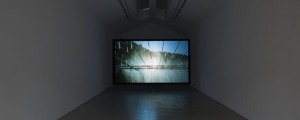More than 400 pieces by artists from across the globe with an emphasis on the line between the artisan and the artist is the rather unconventional new proposal for this summer @ the Fondation Cartier: “Histoires de Voir, Show and Tell”. From Tokyo’s suburbs to the Amazon rainforest, all the works exhibited have one thing in common: they are contemporary artists, but would not be considered as much by the mainstream industry, their work considered too “naive” or primitive.
Are you born an artist or can you become one?
As Alessandro Mendini, the exhibition’s curator, describes “Show and Tell arose from a desire to explore the meaning of the terms “naïve” “primitive” and “self-taught” art, to meet artists who pursue paths outside the norm of conventional visual codes, and to examine the relationships between contemporary art and folk art, artist and artisan”. From wood carvings to textile masks, the exhibition examines traditions and artisanal artistic expression. The “naivety” of each piece brings an original and honest approach to tradition and culture.

Stand-out pieces include Alessandro Mendini’s “Petite Cathédrale” (2002), a stunning mosaic temple with traditional music emanating from the candle-lit interior. Tadanori Yokoo’s thirty-seven paintings, an homage to Rousseau, are also fun and engaging interpretations of Western classics. On the lower floor, you will find a small cinema showing short films by Ariel Kuaray Poty Ortega, documenting the history of his family’s indigenous tribe in Brazil. His work, as he explains, is a means of protecting and affirming an identity and a culture.
Whether they be Brazilian, Congolese, Indian or Haitian, each piece emits a sense of magic and a profound respect for tradition. There is no pretension in this exhibition. Many of the artists found themselves turning to art late in their professional lives, such as Alcides Pereira dos Santos from Sao Paulo, who was originally a bricklayer in the 1950s and went on to create art that no-one had ever seen in Brazil, strict simple lines showing a refreshing childlike take on modern architectural shapes.

If one was obliged to give labels to the exhibition, running themes include vibrant colour, tradition and the respect for nature. The fact that many of the artists come from backgrounds of poverty and isolation does not sober the overall impact. Mendini emphasises that “this is an exhibition of warmth” where floor-to-ceiling windows throw sunshine onto reds, yellows and greens, and arching pastel dividers gently guide visitors around “la magie de l’hyperhumanité” (the magic of hyper-humanity), constructed to give the impression of an abstract jewellery box. To visit this exhibition is to see the world from a different perspective, an experience of instinctive expression in all its forms.
(Histoires de Voir, Show and Tell is @ Paris Fondation Cartier until October 21st)
















